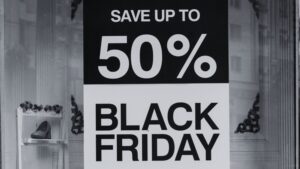- Valentine’s day is not the most important shopping holiday for retailers across the categories of retail we tested.
- Mother’s day seems to have a higher uplift on retail visits.
- Black Friday and the holiday period are still the biggest shopping events for retailers.
- Brands that have seen a big increase in uplift for valentines day are all chocolate focused retailers: See’s: +26.41%, Rocky Mountain: +32.60%, Lindt: +27.43%, Kilwins: +26.40%.
- Outside of Chocolate, Kay Jewellers had the highest uplift from Valentine’s day ( +17.81%).
Introduction
Valentine’s Day, celebrated on February 14th each year, transcends its traditional roots of romantic expressions to become a pivotal event in the global retail calendar. This day of love and affection is characterized by the exchange of gifts, from timeless tokens like flowers and chocolates to more lavish gestures including jewelry and luxury experiences. For retailers, Valentine’s Day represents a significant sales opportunity, as consumers are increasingly willing to open their wallets to demonstrate their affection. The occasion marks an early-year boon for various sectors within the retail industry, influencing not just what people buy but how much they’re willing to spend.
As consumer spending habits evolve, Valentine’s Day has expanded beyond the realm of romantic couples to encompass a broader range of relationships and forms of self-expression. Friends celebrate Galentine’s Day, families exchange tokens of appreciation, and individuals indulge in self-gifting, broadening the scope for retailers to capitalize on this holiday. This diversification of Valentine’s Day spending opens up new avenues for businesses to engage with their customers, innovate their offerings, and drive sales during what might otherwise be a quiet period post the holiday season.
The significance of Valentine’s Day for retailers is multifaceted, reflecting not only in increased foot traffic and sales volumes but also in the strategic marketing campaigns and special promotions that accompany this period. Retailers across the spectrum, from small boutique stores to global e-commerce platforms, harness the sentimental value of Valentine’s Day to connect with their audience, create memorable shopping experiences, and foster brand loyalty.
But what is the actual impact for retailers? This article aims to explore the importance of Valentine’s Day within the retail industry, delving into consumer behavior, spending trends, and the holiday’s impact on sales across different retail categories. Through a detailed analysis of data and market insights, we will uncover how Valentine’s Day shapes retail dynamics, highlighting the strategies that successful retailers employ to maximize the holiday’s potential.
Methodology
To accurately assess the impact of Valentine’s Day on the retail industry, our methodology was meticulously designed to analyze foot traffic data, focusing solely on information accessible through our proprietary platform, Almanac.
Data Collection:
- Foot Traffic Data: We exclusively utilized foot traffic data from our Almanac platform, which aggregates and anonymizes consumer visitation patterns to various retail outlets. This data was collected for the weeks leading up to and including Valentine’s Day, compared against baseline periods to determine the holiday’s specific impact on consumer retail engagement.
- Retail Categories: Our analysis concentrated on significant retail sectors traditionally associated with Valentine’s Day gift-giving, such as jewelry, chocolates, and bath & body products. These categories were selected based on their relevance to the holiday and the potential for noticeable changes in consumer foot traffic patterns.
Analysis:
- Trend Analysis: Utilizing the foot traffic data, we identified trends indicating shifts in consumer behavior during the Valentine’s Day period. This involved analyzing the volume of visits to retailers within the selected categories, comparing these figures to typical foot traffic volumes observed during non-holiday periods.
- Comparative Analysis: To contextualize Valentine’s Day’s significance within the broader retail landscape, we compared its foot traffic uplifts with those observed during other major shopping holidays, such as Mother’s Day, Black Friday, and the holiday season in December. This comparison helped elucidate Valentine’s Day’s relative importance and its distinct impact on retail foot traffic.
Findings: all categories
Analyzing the foot traffic data for Valentine’s Day, Mother’s Day, the holiday period, and Black Friday across different retail categories—jewelry, chocolate, and bath & body—provides valuable insights into consumer behavior and the impact of these events on retail traffic. Here’s an overview of the findings:
Valentine’s Day Uplift
Jewelry: Showed a small decrease, with an overall total uplift of -1.05%, indicating its reduced importance as a gift-giving occasion.
Chocolate: Experienced a substantial uplift across brands, with See’s at +26.41% and Rocky Mountain at +32.60%, underlining the strong association of chocolate with Valentine’s Day.
Bath & Body: Interestingly, this category showed a decrease on average (-5.66%), suggesting Valentine’s Day might not be as pivotal for driving foot traffic to these stores.
Mother’s Day Uplift
Jewelry: This did see some positive uplifts, especially for brands like Fred Meyer Jewelers (+14.65%) and Kay Jewelers (+17.81%), highlighting its significance.
Chocolate: The uplift was notable with See’s at +36.15% and Kilwins at +18.45%, reflecting the tradition of gifting chocolates.
Bath & Body: Demonstrated a mixed response but included remarkable increases for some brands like L’Occitaine (+71.27%), indicating varied consumer preferences.
Holiday Period Uplift
All categories showed substantial increases in foot traffic, with jewelry and chocolate brands experiencing significant uplifts, such as See’s (+54.89%) and Kay Jewelers showing strong performance during the December holidays.
Bath & Body saw the most dramatic increases, particularly for L’Occitane (+182.99%), highlighting the holiday season’s impact on this retail sector.
Black Friday Uplift
Consistent increases across all categories, with jewelry and chocolate brands like See’s (+64.75%) and Kay Jewelers reflecting the high consumer turnout for Black Friday sales.
Bath & Body also showed significant uplifts, especially for L’Occitane (+183.70%), underlining Black Friday’s importance in kickstarting the holiday shopping frenzy.
What About The Weather’s Influence on Foot Traffic?
The weather plays a significant role on foot traffic into stores and restaurants over Valentine’s Day. According to our partners at Planalytics, February represents a month with above-normal weather sensitivity for department stores, shoe stores, and restaurants. As February is historically a low-volume month for retail sales, small changes in weather can have a notable influence if, and when, consumers go outside to brave the winter elements. For example, a warm and dry day in February will get people out to shops and dining destinations, while cold, snow, and traffic-limiting weather will have the opposite effect.
In February, foot traffic into Department Stores traffic can have a ± 4.6% swing due to the weather alone. Weather sensitivity is higher in northern tier regions such as the Northeast, Great Lakes, and Northwest, where weather can shift traffic by ± 5% to ± 7.0%. Shoe store traffic can see a ± 4.8% swing, with the same regions in the northern tier of the US ranging up to ± 9.0%.
During the week of Valentine’s Day this year, based on an analysis of pass_by data, Planalytics estimates that foot traffic into Department stores was favorably impacted by weather by +0.4% (40 basis points) compared to normal. Weather not only influences foot traffic, but it also directly affects the items that consumers put into their baskets. As an example, weather-driven demand for candy on a national level was up +0.2% vs normal and demand for chocolate was up +0.1% vs normal.
Overall Insights
- Valentine’s Day Uplift: +13.23%, indicating a moderate positive impact across categories, with chocolate showing the strongest association with Valentine’s Day.
- Mother’s Day Uplift: +38.27%, showcasing a significant increase, particularly pronounced in the bath & body category due to exceptional uplifts for brands like L’Occitane.
- Holiday Period Uplift: An average of +59.47%, reflecting a substantial increase in foot traffic, with the bath & body sector experiencing the most dramatic rises.
- Black Friday Uplift: Approximately +62.11%, indicating the highest average uplift across all events, with strong consumer turnout in both the chocolate and bath & body categories.
The holiday season and Black Friday are universally significant across all tested retail categories, driving substantial increases in consumer foot traffic.
Valentine’s Day shows variability in its impact, with significant uplifts for jewelry and chocolate brands but not as much for bath and body stores.
Mother’s Day is a key event for jewelry and chocolate sectors, with varied but generally positive effects on bath and body brands.
In conclusion, while Valentine’s Day is crucial, especially for chocolate retailers, the holiday season in December and Black Friday stand out as the most critical periods for boosting foot traffic across all categories. Retailers might focus their marketing efforts and resource allocation to maximize sales during these peak times, tailoring strategies to the specific dynamics and consumer behaviors associated with each retail category.
Jewelery
For Jewellers the Valentine’s event is a mixed bag. Many of the brands that we tested showed decreases over the period when compared to similar shopping days.
One outlier was Gorjana whose significant uplift during Valentine’s Day can also be influenced by strategic expansions, including a few new store openings in the weeks leading up to the holiday. These openings likely contributed to increased visibility and accessibility for consumers seeking thoughtful Valentine’s Day gifts. Coupled with the brand’s appeal for modern, versatile jewelry at an affordable luxury price point, effective marketing strategies, and a strong emphasis on quality and customer service, Gorjana has positioned itself as an attractive option for holiday shoppers. Special promotions and exclusive Valentine’s Day collections may further entice customers, making the brand’s recent expansion a timely move to capitalize on the increased demand during this romantic season.
Outside of Valentine’s day the highest foot traffic weeks are around the holiday season, particularly in December. The week starting 15th December 2019 had the highest total foot traffic with over 20 million visits across all retailers tested, far exceeding Valentine’s Day traffic. This suggests that while Valentine’s Day is important, the holiday season is even more critical for retailers.
In conclusion, while Valentine’s Day is an important period for increased foot traffic, especially for jewelers and related retailers, the holiday season in December is the most critical period. Retailers may want to allocate resources and marketing efforts accordingly to maximize sales during these peak times. For a pitch to journalists, highlighting the comparative analysis of foot traffic during these peak shopping periods can underline consumer behavior trends and the retail industry’s seasonal dynamics.
Chocolate
Key Insights:
This analysis indicates a significant increase in foot traffic during the Valentine’s week compared to a baseline period in January for these chocolate brands. The uplift showcases the impact of Valentine’s Day on consumer behavior, with all selected brands experiencing a notable rise in foot traffic, reflecting the relevance of this holiday for the chocolate retail sector.
The universal uplift observed for chocolate brands during Valentine’s Day, while not as pronounced as other holiday events, can be attributed to the deep-rooted cultural tradition of gifting chocolates as a symbol of affection and love. Chocolate has long been associated with romance and Valentine’s Day, making it a go-to choice for consumers looking to express their feelings. This tradition ensures a consistent increase in demand during the holiday, contributing to the uplift across chocolate brands.
Several factors may influence the scale of this uplift compared to other holidays:
- Seasonal Demand: Valentine’s Day is specifically associated with romantic gestures, making chocolates a popular but singularly focused gift choice. In contrast, other holidays like Christmas or Easter may see a broader range of gifting behaviors that include chocolates among a wider variety of gift types, possibly contributing to more significant sales uplifts during these periods.
- Market Saturation: The abundance of chocolate brands and options available may lead to a more dispersed uplift, with consumers having a wide array of choices, potentially diluting the impact on individual brands.
- Consumer Preferences: Evolving consumer preferences towards health-conscious eating and unique experiences might also influence the magnitude of uplift for chocolates on Valentine’s Day. While still popular, some consumers may opt for alternative gifts that align with these preferences, slightly moderating the uplift compared to holidays that traditionally encourage indulgence.
- Marketing and Promotions: The extent and effectiveness of Valentine’s Day marketing campaigns and promotions by chocolate brands can also affect the uplift. Brands that leverage innovative marketing strategies, offer limited-edition products, or engage in partnerships may see higher uplifts.
Despite these factors, the consistent uplift for chocolate brands during Valentine’s Day underscores the enduring appeal of chocolates as a preferred expression of love and appreciation, cementing their status as a Valentine’s staple even as consumer behaviors and preferences continue to evolve.
Bath and Body brands
Key Insights:
The data for bath and body brands around key retail holidays reveals intriguing insights into consumer behavior and the retail landscape for these products. The observed decrease in foot traffic for Valentine’s Day, with an average drop of -5.66%, suggests that while bath and body products are popular gift choices, they may not hold the same traditional Valentine’s Day appeal as chocolates or jewelry. This could be attributed to consumer perceptions of bath and body products as more personal care items rather than romantic gifts, or it might reflect a broader trend towards experiential or more personalized Valentine’s gifts.
Contrastingly, the significant uplifts seen during Mother’s Day, the Holiday Period, and Black Friday highlight the versatility and appeal of bath and body products for a range of gift-giving occasions. The remarkable surge during the Holiday Period, with an average uplift of +49.04%, and an extraordinary increase for brands like L’Occitane during Black Friday (+183.70%), underscore the effectiveness of seasonal promotions, holiday-themed packaging, and gift sets that cater to the festive spirit.
These findings suggest that bath and body retailers can benefit from tailoring their marketing and product offerings to align with consumer expectations for each holiday. For Valentine’s Day, introducing products with romantic themes or bundling items into couples’ gift sets might mitigate the observed decline. Conversely, the substantial uplifts during other holidays indicate a strong market for bath and body products as gifts, provided the offerings resonate with the occasion’s sentiment.
For bath and body brands, adapting strategies to capitalize on the strengths shown during Mother’s Day and the end-of-year holidays, while innovating to capture Valentine’s Day’s potential, could be key to maximizing seasonal opportunities. This data underscores the importance of understanding consumer motivations and holiday-specific dynamics to tailor offerings and promotions effectively.
What can retail brands learn for Valentine’s day foot traffic trends?
Integrating insights from Valentine’s Day foot traffic trends, retail brands can leverage platforms like almanac to refine and enhance their strategies for this and other key holiday periods. almanac, with its robust foot traffic analysis capabilities, offers retailers a precise tool to understand and predict consumer behavior, enabling data-driven decision-making.
By utilizing almanac, retailers can gain deep insights into the ebb and flow of foot traffic during Valentine’s Day, identifying which product categories benefit from increased consumer attention and which may require a strategic pivot. This granularity allows for the optimization of product offerings, ensuring that shelves are stocked with items that resonate with the Valentine’s ethos of romance and affection.
Moreover, almanac’s insights platform can help retailers tailor their operations and promotional activities more effectively. By understanding peak foot traffic times and consumer preferences, retailers can schedule promotions, customize marketing messages, and create in-store experiences that align with shoppers’ desires during the Valentine’s period. This could include special Valentine’s-themed displays, targeted social media campaigns, or exclusive in-store events that draw customers in.
The platform also enables a comparative analysis with other significant retail holidays, providing a broader perspective on consumer spending behaviors throughout the year. Retailers can leverage this data to strategically plan their annual marketing calendar, allocate resources more efficiently, and craft holiday-specific promotions that tap into the unique shopping dynamics of each season.
almanac offers retail brands a powerful tool to navigate the complexities of holiday retailing. By weaving in insights from such a platform, retailers can not only enhance their Valentine’s Day strategy but also gain a competitive edge in the increasingly crowded holiday market. Understanding and adapting to foot traffic trends with the help of almanac can lead to optimized product selections, more engaging marketing campaigns, and ultimately, improved sales performance during Valentine’s Day and beyond.





